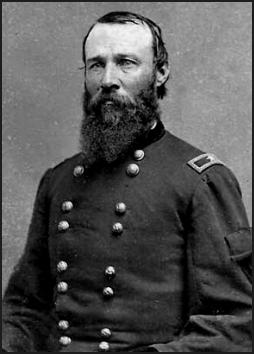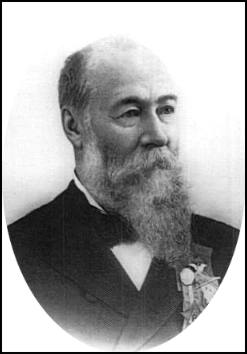Washington Lafayette Elliott facts for kids
Quick facts for kids
Washington Lafayette Elliott
|
|
|---|---|

Washington Lafayette Elliott
|
|
| Born | March 31, 1825 Carlisle, Pennsylvania |
| Died | June 29, 1888 (aged 63) San Francisco, California |
| Place of burial |
The Presidio in San Francisco
|
| Allegiance | United States of America Union |
| Service/ |
United States Army Union Army |
| Years of service | 1846–1879 |
| Rank | |
| Commands held | 2nd Iowa Volunteer Cavalry 3rd Cavalry Regiment |
| Battles/wars | Mexican–American War American Civil War |
Washington Lafayette Elliott (born March 31, 1825 – died June 29, 1888) was an important general in the Union Army during the American Civil War. He was known for leading a group of soldiers called a division at the Battle of Nashville in 1864. After the war, he received an honorary promotion to major general in the U.S. Army.
Contents
Washington Elliott's Early Life and Military Start
Washington Lafayette Elliott was born on March 31, 1825, in Carlisle, Pennsylvania. His father, Jesse Duncan Elliott, was a Commodore in the U.S. Navy. Young Washington sometimes traveled with his father on his sea voyages.
After attending Dickinson College, Elliott joined the U.S. Military Academy on July 1, 1841. He left in 1844 to study medicine. However, he soon returned to the military. In 1846, he became a second lieutenant to serve in the Mexican–American War.
During the war, he became sick at the Siege of Veracruz. He spent the rest of the war helping with recruiting new soldiers. He stayed in the army and was promoted to first lieutenant in 1847. He worked as a quartermaster, which meant he was in charge of supplies. In 1854, Elliott became a captain.
In 1858, Elliott married Valeria Biddle Blaney. She was a cousin of Spencer Fullerton Baird, a famous scientist from the Smithsonian Institution.
Elliott's Role in the American Civil War
When the American Civil War began, Washington Elliott served in Missouri. He fought in the Battle of Wilson's Creek. On August 3, 1861, he was promoted to major in the 3rd U.S. Cavalry.
On September 14, 1861, he became a colonel of the 2nd Iowa Cavalry. He served under Maj. Gen. John Pope at the Battle of Island Number Ten. He also led a group of soldiers called a brigade during the Siege of Corinth.
Becoming a Brigadier General
Elliott became a brigadier general on June 11, 1862. This promotion came after he led a successful attack on the Mobile and Ohio Railroad. He then worked on Maj. Gen. John Pope's team in the Army of the Mississippi.
Elliott later moved East with General Pope. He became the chief of cavalry for the Army of Virginia. He was injured at the Second Battle of Bull Run on August 30, 1862.
After recovering, he worked in the Department of the Northwest. He commanded the District of Wisconsin and then the entire department. He returned East in 1863.
Leading Divisions and Corps
In the first half of 1863, Elliott commanded a brigade in the Middle Department. He led this brigade during the Second Battle of Winchester in June. Later, he took command of a new division. This division joined the III Corps of the Army of the Potomac after the Battle of Gettysburg.
Elliott then went West again. He led the first division of the cavalry corps in the Army of the Cumberland. This group helped during the Siege of Knoxville. He also commanded the cavalry corps during the Atlanta Campaign.
In late 1864, he moved to lead infantry soldiers. He commanded a division of the IV Corps at the important Battle of Nashville. After this, he commanded the District of Kansas. He left volunteer service on March 1, 1866.
On June 17, 1866, President Andrew Johnson nominated Elliott for an honorary promotion. He was given the honorary rank of major general in the U.S. Army. This promotion was confirmed by the U.S. Senate on July 23, 1866.
Life After the Civil War
After the Civil War, Washington Elliott stayed in the Regular Army (United States). He served as a major in the 1st Cavalry. He was promoted to lieutenant colonel. In 1878, he became a colonel of the 3rd Cavalry.
Elliott retired from the army in 1879. He then became a banker in San Francisco, California. He passed away in San Francisco in 1888. He was buried at the San Francisco Presidio.


